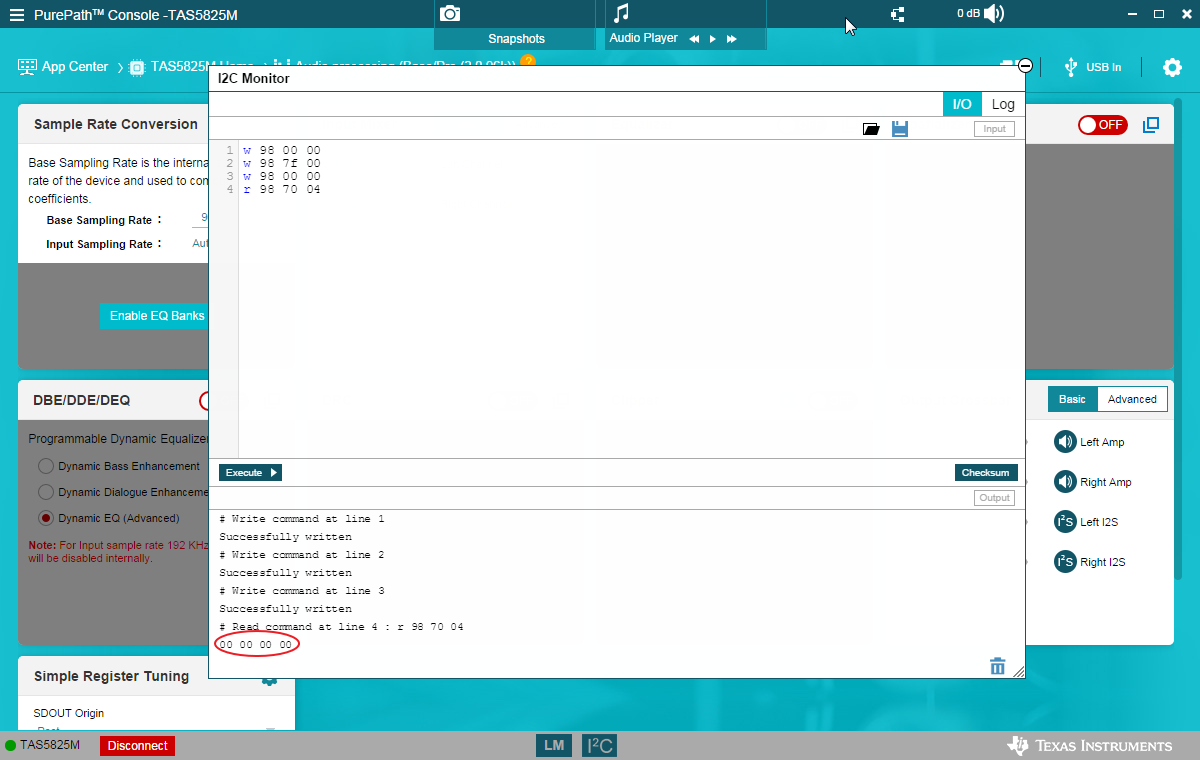Other Parts Discussed in Thread: PUREPATH-CMBEVM,
Hello,
I am trying to determine from the TAS5825M datasheet, what fault events will cause the output of the amplifier to turn off or shut-down. I believe the following conditions may cause the amp output to shut-off or shut-down:
CHAN_FAULT Register (Offset = 70h) [reset = 0x00]
CH1_DC_1 left channel DC fault, CH2_DC_1 right channel DC fault
GLOBAL_FAULT1 Register (Offset = 71h) [reset = 0h]
DVDD_UV_I DVDD UV fault, DVDD_OV_I DVDD OV fault
PVDD_OV_I PVDD OV fault, PVDD_UV_I PVDD UV fault
GLOBAL_FAULT2 Register (Offset = 72h) [reset = 0h]
CBC_FAULT_CH2_I right channel cycle by cycle over current fault, CBC_FAULT_CH1_I left channel cycle by cycle over current fault
OTSD_I over temperature shut down fault
I am looking specifically for what events can cause the output audio to interrupt momentarily or to shut-off or shut-down.
Thank you and kind regards,
John
PVDD OV fault, PVDD UV fault
DVDD OV fault, DVDD UV fault
OTSD_I Over Temperature Shutdown fault


